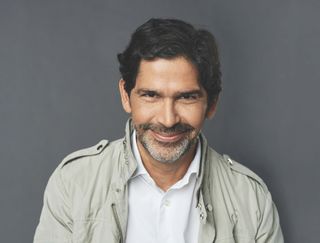Marcos Santana: The Quest for Better Programming

As telenovelas have spread around the world over the last 30 years, one of this year’s Brandon Tartikoff Legacy Award winners has played a crucial role in boosting both their quality and global popularity.
“I’ve been on a quest to elevate the quality of Hispanic content, to give Latinos the content they deserve, produced by Hispanics for Hispanics,” Marcos Santana, president of NBCUniversal’s Telemundo Global Studios, said. “That has been my goal, my prime motivator from the very beginning.”
Santana began in TV in 1989, when he and two friends founded a production company that quickly expanded into international distribution. “By the time I turned 33, Tepuy International had 80 employees with offices in Spain, Italy, Venezuela and Colombia,” he recalled.
Santana’s next great leap forward came after Telemundo was acquired by NBCUniversal, which followed up that deal by acquiring Tepuy in 2006. “Basically, the idea behind the acquisition was to produce more original content at their own Hispanic studio,” Santana said.
See Also:17th Annual NATPE Brandon Tartikoff Legacy Awards | Christine Baranski: A Success Across All Genres | Karey Burke: Live and Event Programming Is the Focus | Courtney Kemp: Promising Future for Powerhouse Producer | WarnerMedia's Jeff Zucker: Profiting from Live TV
Santana quickly turned that strategy into a production and distribution juggernaut for Hispanic content, with original telenovelas, reality series and entertainment fare. As president from 2007 to 2017, Santana built Telemundo Internacional into the second-largest distributor of Spanish-language programming globally, selling shows in more than 120 countries and establishing a massive production operation. Today, as head of Telemundo Global Studios, Santana now heads an operation that produces about 1,000 hours of ratings-boosting programming for Telemundo each year.
Even more notably for the state of Hispanic TV, Santana used co-productions, international sales and innovative alliances with streaming services such as Netflix and Quibi to increase programming budgets to unprecedented levels. And he established close ties with the creative community in Hollywood and elsewhere to improve the storytelling and creativity of Hispanic TV programming.
Broadcasting & Cable Newsletter
The smarter way to stay on top of broadcasting and cable industry. Sign up below
One particularly notable example of those efforts is La Reina del Sur. A co-production with Netflix, “the second season was the most expensive production ever in South America,” Santana said, with production in eight countries and 14 cities involving around 3,000 people.
That investment also paid off in the ratings, as the show in season two became Telemundo’s most successful series in history. With 12.5 million viewers over its run, La Reina del Sur often beat one English-language network or more in its 10 p.m. time slot, Santana said.
